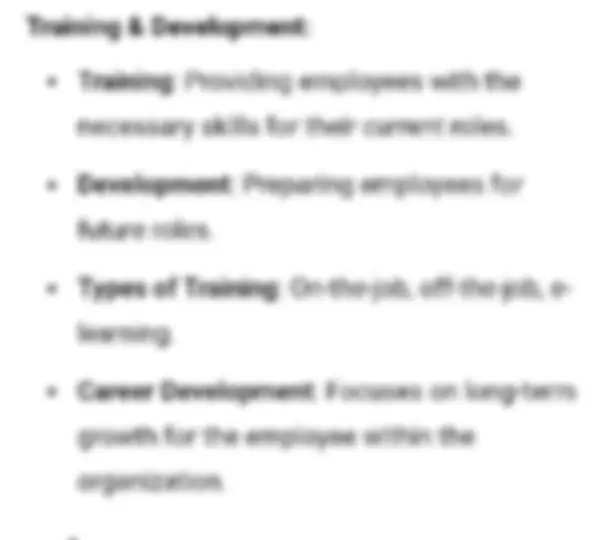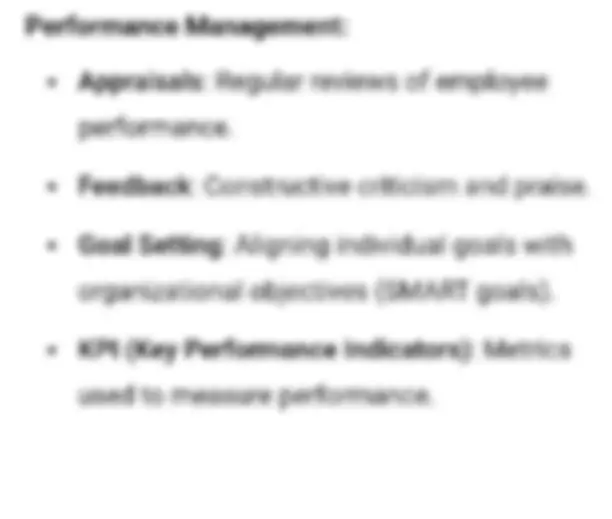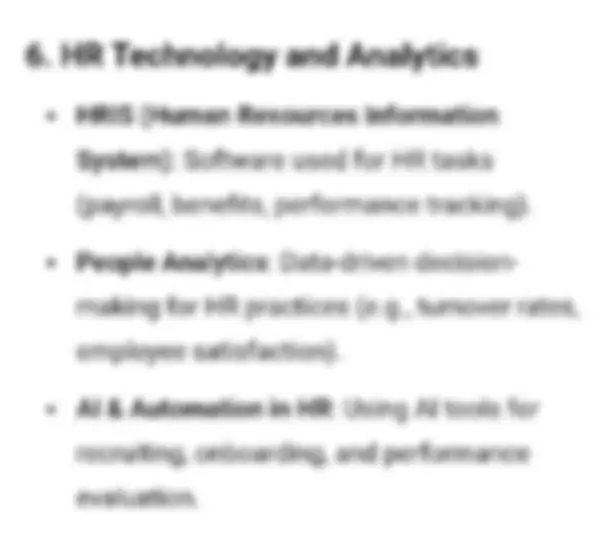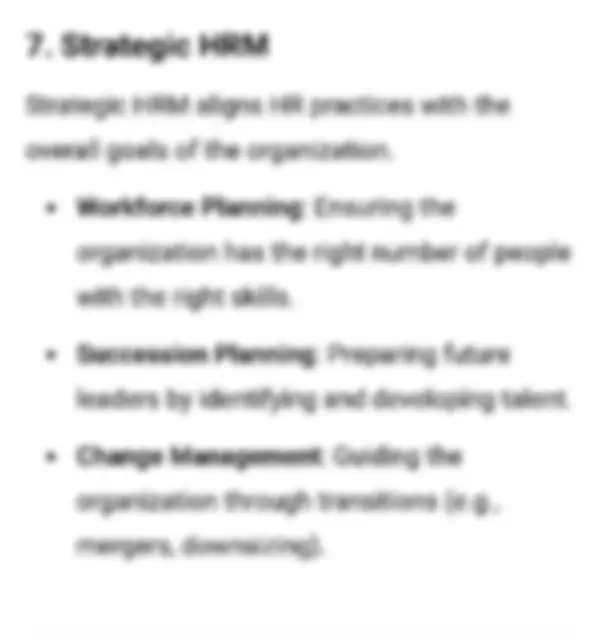Partial preview of the text
Download Human resources management and more Summaries Human Rights in PDF only on Docsity!
1. Introduction to Human Resources Management Human Resources Management (HRM) is the process of managing people in an organization. HRM's primary goal is to optimize employee performance to achieve organizational goals. Key Functions of HRM: e Recruitment & Selection: Attracting and hiring the best talent. e Training & Development: Enhancing employees' skills and knowledge. e Performance Management: Ensuring employees meet organizational standards. ¢ Compensation & Benefits: Designing salary structures and benc..«.S programs. 2. Key Areas of HRM Recruitment & Selection: e Recruitment refers to the process of identifying and attracting candidates. e Internal (promotions) vs. External recruitment (job postings, headhunting). e Selection involves choosing the best-fit candidate for the job. ¢ Methods: Interviews, psychometric tests, assessments. v Performance Management: Appraisals: Regular reviews of employee performance. Feedback: Constructive criticism and praise. Goal Setting: Aligning individual goals with organizational objectives (SMART goals). KPI (Key Performance Indicators): Metrics used to measure performance. 3. Compensation & Benefits e¢ Compensation: The total amount of pay employees receive. e Includes salary, bonuses, commissions, and other financial rewards. e Benefits: Non-wage compensations. e Health insurance, retirement plans, sick leave, paid time off. e Equity-based Compensation: Stock options, profit sharing. 5. Legal & Ethical Considerations e Labor Laws: Ensuring the company adheres to local and international labor regulations. e Equal Employment Opportunity (EEO) e Occupational Health and Safety (OSHA) e Family and Medical Leave Act (FMLA) e Wage and Hour laws. e Ethical HR Practices: Maintaining fairness, transparency, and consistency in HR decisions. e Ethical hiring practices. e Respecting employee privacy. 6. HR Technology and Analytics e HRIS (Human Resources Information System): Software used for HR tasks (payroll, benefits, performance tracking). e« People Analytics: Data-driven decision- making for HR practices (e.g., turnover rates, employee satisfaction). e Al & Automation in HR: Using Al tools for recruiting, onboarding, and performance evaluation. 

















